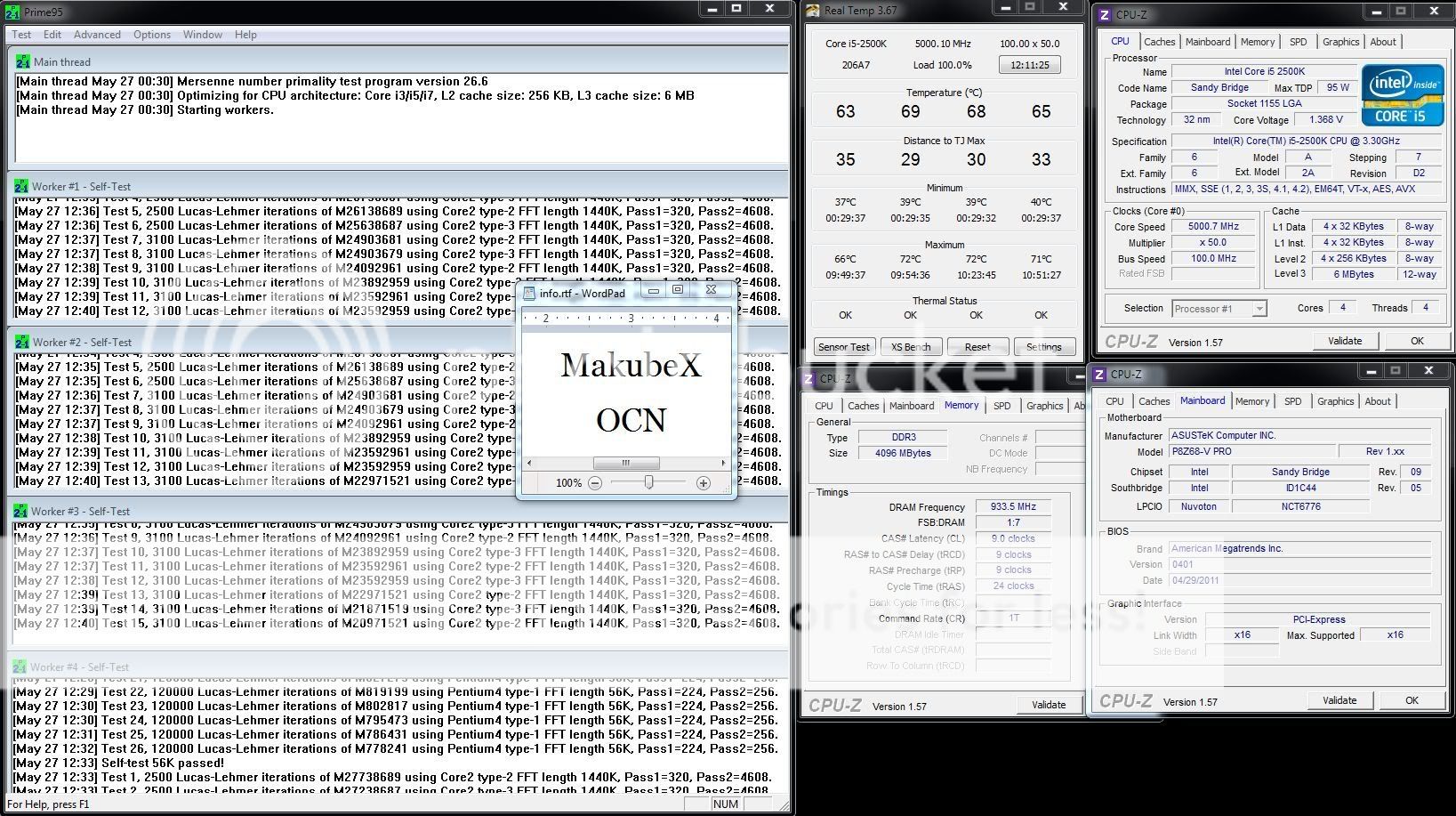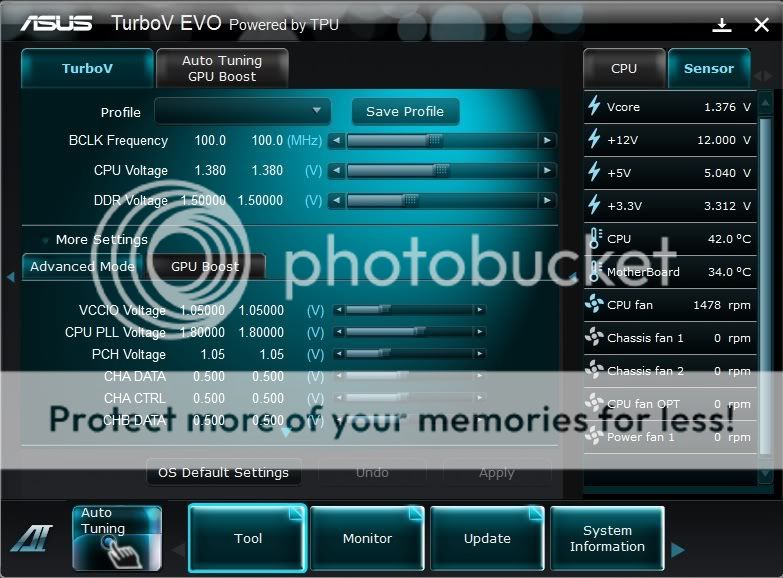Chosen Juan
New Member
- Joined
- Mar 27, 2011
- Messages
- 82 (0.02/day)
| Processor | Intel Core i5 2500K |
|---|---|
| Motherboard | ASRock Fatal1ty Professional P67 |
| Cooling | Xigmatek Aegir |
| Memory | 8GB (2x4GB) G.Skill RipJaws X DDR3-1600 |
| Video Card(s) | MSI Twin Frozr II Radeon HD 6950 2GB |
| Storage | Crucial M4 64GB SSD (Boot) Samsung Spinpoint F3 1TB (Storage) |
| Display(s) | Samsung SyncMaster 22" |
| Case | Corsair 600T Special Edition White |
| Power Supply | Corsair HX850 Modular |
| Software | Windows 7 Pro 64-Bit |
try disabling the C1E or C3 states in the bios.
or setting the power options within windows for full power usage. instead of balanced by default.
if its not either of those then i dont know. I havent really played around with the bios since i only put this rig together thursday just gone
C1E, C3, C6 and Package C are all disabled in the BIOS...hmm...oh well it's not a big feature for me but it would have been nice.













 1600MHZ mem and up only need more.
1600MHZ mem and up only need more.